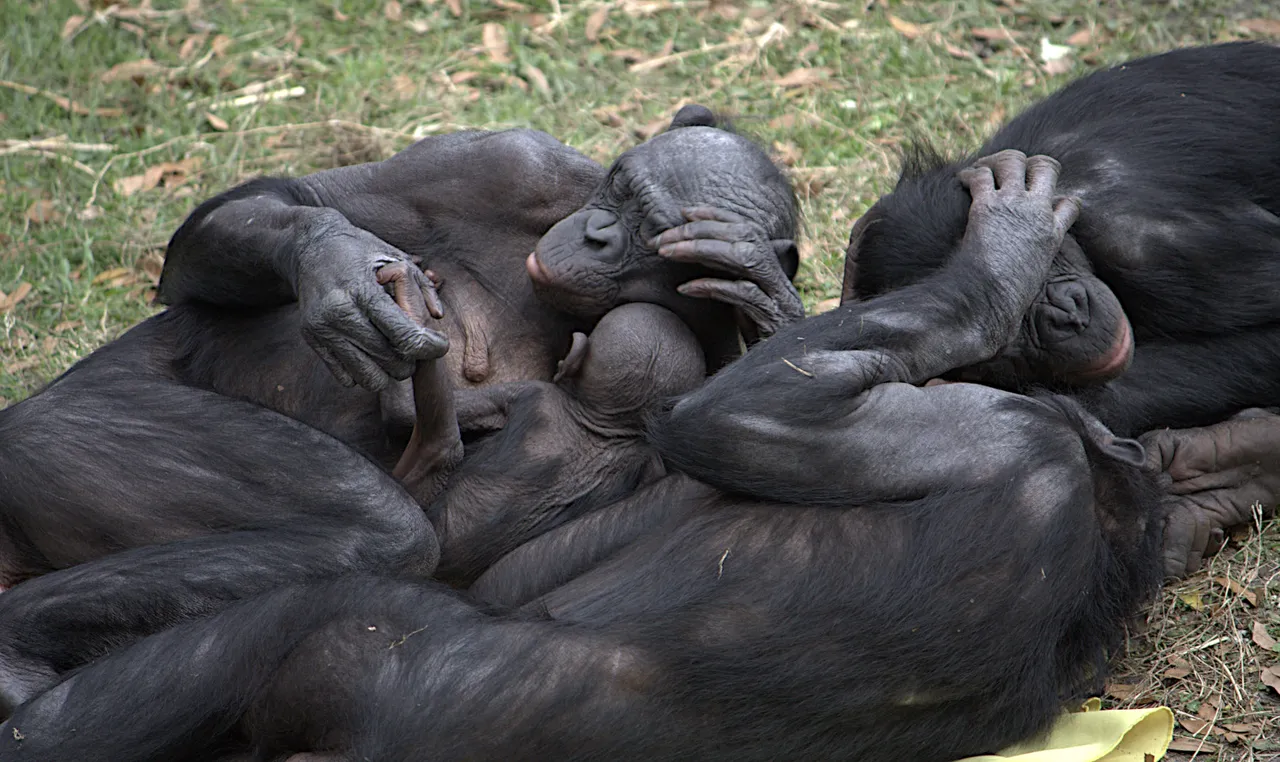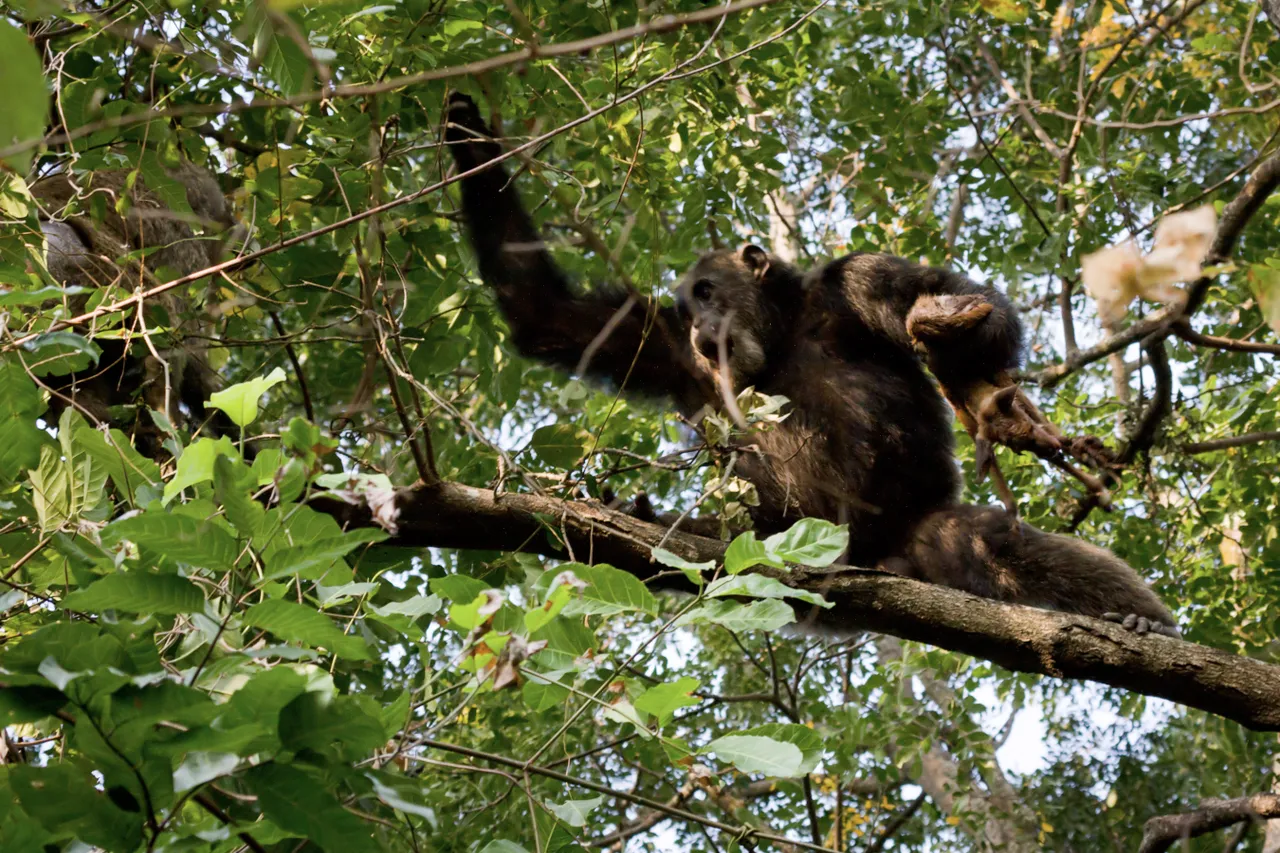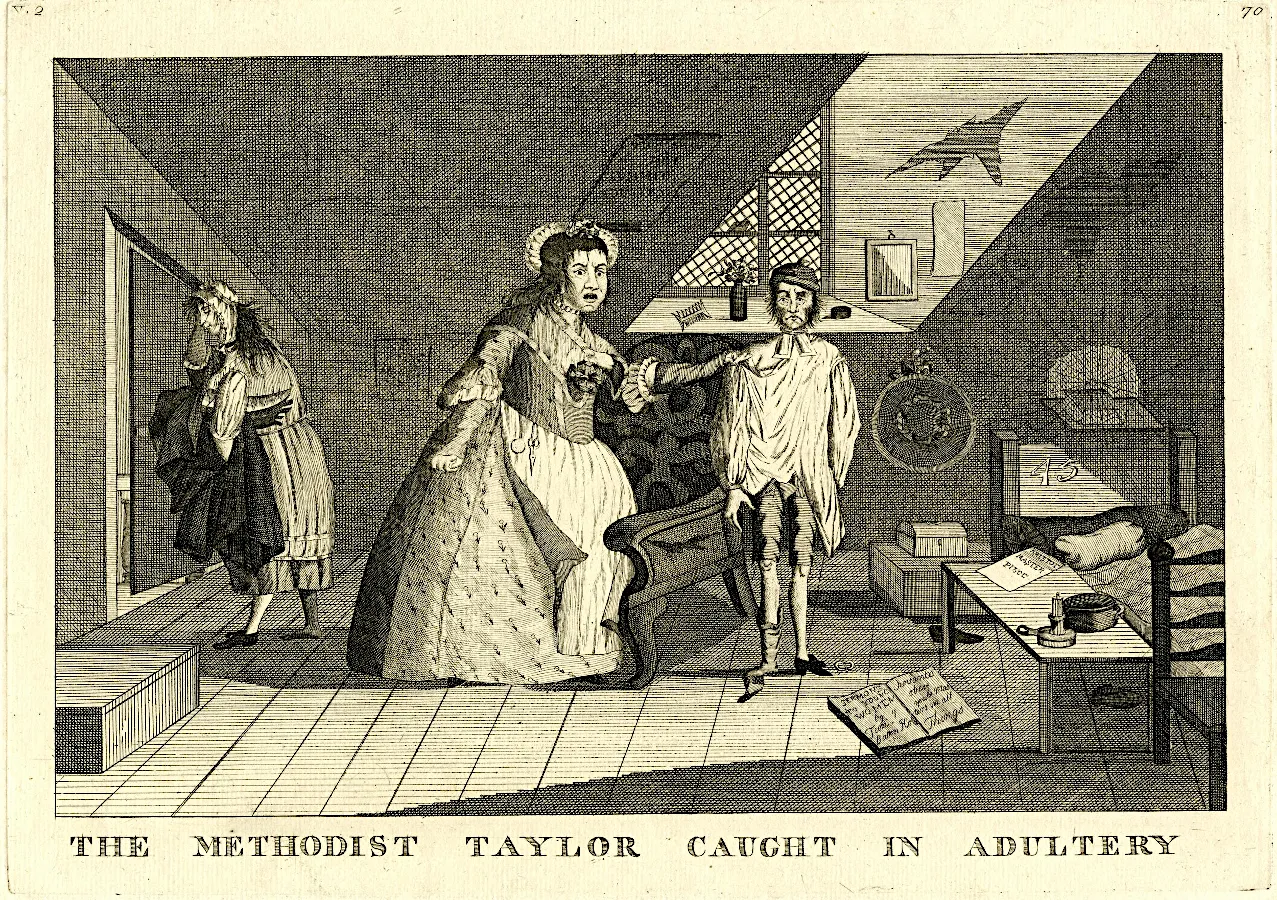Bonobo Group Hug

Image credit: Magnus Manske (Source), Laggedonuser (Author). Used under CC 2.0 license. The picture illustrates an observed behavioral pattern in bonobos: they'd rather get along, than fight.
There was a time when it was believed chimpanzees were more closely related to humans (in evolutionary and genetic terms) than any other animal. In recent years though, chimps have had to share this special status. It turns out that bonobos share as much genetic material with humans as chimps. As a matter of fact, some studies indicate that bonobos may actually be closer to humans than chimps.
Besides regarding this information as a bit of entertaining trivia (and also suggesting a moral obligation to treat these non-human cousins humanely), why do we care about these primate relatives? Does this information have relevance to our understanding of human behavior? As it turns out, probably.
Chimpanzees at Chester Zoo, UK

Image credit:Photograph by Mike Peel (www.mikepeel.net) (author). CC-BY-SA-4.0. Please attribute as per the author line.
Bonobos and chimps share about 98.7% of human DNA. The two species share about 99.6% of DNA with each other. It is believed that humans, chimps and bonobos descended from a common ancestor. According to an article published in Nature, "more than 3% of the human genome is more closely related to either bonobos or chimpanzees than these are to each" other.
About 4 to 7 million years ago, humans split off from their chimp cousins and began a distinct evolutionary development. Bonobos, it is believed, split off from chimps about 1 million years ago and began to evolve independently.
The Youtube video link below shows the fossil skull of what is believed to be the chimp/bonobo/human common ancestor, Nyanzapithecus Alesi. This 13-million-year-old infant's skull was found in Kenya.
Image credit: Produced by
DeAnza Design & Manufacturing Technologies Dept.)
Again, this begs the question, Why should we care? Is this just another bit of trivia? No. What's interesting about this information is that when the two ape species split, they evolved distinct patterns of aggression. The chimps became hunters, fighters, killers. They not only hunt other animals, but they kill each other. They practice infanticide. Though bonobos have been known to hunt, they do not kill each other. They do not practice infanticide.
An Adult Male Chimp Snatches an Antelope From a Baboon

Image credit: Ikiwaner. Used under CC 1.2 license.
Do these patterns of aggression in our cousins tell us anything about ourselves?
That would be hard for me to say, but fortunately, I don't have to. In 2018, a wonderfully relevant (to this discussion) article was published in PNAS that looked at aggression in bonobos, chimpanzees, and humans (other animals are also referenced). The article suggests that scientists can trace the evolutionary trajectory of aggression in these three species by comparing the types of aggression that appear in each today.
Proactive and Reactive Aggression
It has been suggested by many researchers, including those who wrote the above-referenced article, that aggression may be characterized in two ways: reactive and proactive. In order to understand the difference between these types of aggression, we can look at one human emotion: jealousy. This can result in both reactive and proactive aggression.
The Methodist Taylor (Sic) Caught in Adultery

Image credit: © The Trustees of the British Museum, released as CC BY-NC-SA 4.0. 1778 etching.
If a spouse walks in on a partner engaged in an adulterous act, there will likely be a surge of neurochemical responses that may prompt an aggressive impulse. That seems to be the case in the etching featured above (The Methodist Taylor (Sic) Caught in Adultery) This is reactive aggression. The surge of chemicals and cascade of impulses defines reactive aggression.
Bullying

Image credit:Edith Castro Roldán, Oscar Manuel Luna Nieto. CC 4.0. Bullying is characterized as proactive aggression, as are stalking, ambushing and premeditated homicide.
In some cases, after the immediate jealous response there is a cooler anger that sets in. There is a desire for revenge, the desire to hurt the people who have engaged in the adulterous act. This form of aggression is cold, calculated and has a clear purpose. This is, by definition, proactive aggression. It is not characterized by the cascade of chemicals seen in the initial response to the adulterous act.
Types of Aggression in Humans and Anthropoid Cousins
According to the PNAS article referenced previously, humans and chimps demonstrate high rates of death in intergroup aggression. In simple terms, chimps will form coalitions in order to stage attacks on other chimp groups. The goal is to gain some advantage, maybe territory, maybe food. This is called conspecific aggression. According to the PNAS article, "Humans are the only other primate species (besides chimps) in which similarly high (or higher) rates of death have been recorded in intergroup aggression".
La Cambe German Military Cemetery, Calvados, Normandy, France

Image credit: Jebulon. Used under CC CC0 1.0 Universal Public Domain Dedication. Waging war is an expression of conspecific, proactive aggression.
While humans and chimps demonstrate high levels of proactive aggression, (the following quote from PNAS) "...in bonobos (P. paniscus) no proactive aggression leading to intergroup killings has been observed,... and no other evidence of proactive aggression toward conspecifics has been reported."
By contrast, both bonobos and chimps demonstrate higher levels of reactive aggression than humans do. A number of studies come to this conclusion by comparing the rate of spontaneous skirmishes among humans in small-group settings, with spontaneous conflicts in groups of bonobos and chimps.
Comparing Expressions of Reactive and Proactive Aggression

Image credit for the chart: agmoore. Public domain. Images within the chart (all public domain) credited at the end of the blog.
Are We More Chimp, or Bonobo?
The Max Plank institute looked at the genome of bonobos, humans, and chimps. The Institute found that "a small bit of our DNA, about 1.6%, is shared with only the bonobo, but not chimpanzees. And we share about the same amount of our DNA with only chimps, but not bonobos". One of the pieces missing from the chimp genome, but shared by humans and bonobos may be a small part of the aggression puzzle. There is a protein present in bonobo and human urine which "allows the individual to detect differences in scent to pick up social cues." This may be a piece in the puzzle that explains why humans and bonobos have lower rates of reactive aggression than chimps. Group members in these species can read each other's cues and thus may be able to decrease incidents of reactive aggression (spontaneous conflict).
I've linked to a rather entertaining and informative National Geographic Youtube video on bonobo sharing and empathy:

Conclusion
I began this essay by asking whether humans are more bonobo than chimp. I haven't really answered that question on an individual or group level. There are obvious genetic connections between humans and their primate cousins. Among humans there are certainly individual differences that are both genetic and epigenetic in nature. There is, for example something called, the 'warrior' gene. And, there is a recognized correlation between testosterone levels and aggression. But as a guide to figuring out how and why each of us is aggressive (or not aggressive), that is a puzzle that has yet to be sorted.

Image credits for the chart on aggression (all public domain):
Bonobo Face
Evanmaclean
Chimp Face
Frontierofficial
Human Face (Victoria Kamāmalu, Prime Minister of Hawaii, circa 1860)
James J. Williams
Selected Research Sources
1.https://www.ncbi.nlm.nih.gov/pmc/articles/PMC4287885/
2.https://leakeyfoundation.org/new-13-million-year-old-infant-3.skull-sheds-light-on-ape-ancestry/
4.https://www.animalcognition.org/2016/07/31/bonobos-make-love-and-war/
5.https://www.psychologytoday.com/us/blog/out-the-darkness/202002/making-love-instead-war
6.https://www.science.org/content/article/bonobos-join-chimps-closest-human-relatives
7.https://pasa.org/awareness/bonobos-and-chimpanzees-which-ape-is-which/
8.https://leakeyfoundation.org/new-13-million-year-old-infant-skull-sheds-light-on-ape-ancestry/
9.https://www.animalcognition.org/2016/07/31/bonobos-make-love-and-war/
10.https://www.psychologytoday.com/us/blog/out-the-darkness/202002/making-love-instead-war
11.https://www.science.org/content/article/bonobos-join-chimps-closest-human-relatives
12.https://pasa.org/awareness/bonobos-and-chimpanzees-which-ape-is-which/
13.https://www.pnas.org/content/115/2/245
14.https://www.dvm360.com/view/bonobos-or-chimpanzees-which-are-our-closer-relatives
15.https://link.springer.com/article/10.1007/s11948-020-00219-z
16.https://www.science.org/content/article/bonobos-join-chimps-closest-human-relatives
17.https://www.nature.com/articles/nature11128
18.https://www.deanza.edu/dmt/contact.html
19.https://www.reuters.com/article/us-science-infanticide/infanticide-common-among-adult-males-in-many-mammal-species-idUSKCN0IX2BA20141113
20.https://www.newscientist.com/article/dn14926-loving-bonobos-have-a-carnivorous-dark-side/
21.https://d1wqtxts1xzle7.cloudfront.net/38595818/IJFP-2332-287X-03-302-with-cover-page-v2.pdf?Expires=1642888460&Signature=LIOX8BWbFXplyKd78AbdITCUAa6uQcKKGnPBDPlXwJnUATVbzf4isEAIf4pHKu6-D9RIkIQJIfxV78UDyzI7BxWqbe5uQ43AxAVqUr4Nb9gf6MSzFH0ddShYr9ItEJEgbzNu9gRPZchh5vIaNhQSUCBgXvtLEssH8qdKMykT0iOeyZOHGz8Q11V52pRgVJljt7vvApe24Vrt7r0U12CSc3SgcmYvsZwMGJJqY5q8cxZoBKN0ykcbInyy0WCQz2QFNXUiyTNUyZFw30Fj7zKoobebPPakwJZbac2WPSj8eedrJgg6grVLNCerjPYZ5d4HjjEA5CpSZ5G3DCgA__&Key-Pair-Id=APKAJLOHF5GGSLRBV4ZA
22.https://bigthink.com/the-past/war-and-peace/
23.https://brill.com/view/journals/beh/aop/article-10.1163-1568539X-bja10111/article-10.1163-1568539X-bja10111.xml?language=en
24.https://psycnet.apa.org/record/2010-23649-006
25.https://www.ncbi.nlm.nih.gov/pmc/articles/PMC5789961/
26.https://www.cdc.gov/genomics/disease/epigenetics.htm
27.https://www.ncbi.nlm.nih.gov/pmc/articles/PMC3693622/
28.https://www.theguardian.com/science/2015/may/14/early-men-women-equal-scientists
29.http://thescienceexplorer.com/nature/bonobos-form-all-female-coalitions-target-violent-males



